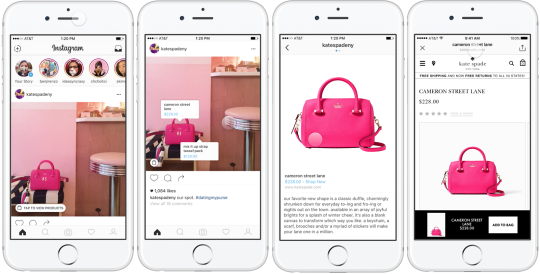
For almost a week there has been all the buzz about the new Instagram feature currently being tested. The platform is coming up with shoppable tags for the businesses’ profiles and it is hard not to be excited as the process of buying for us as consumers gets increasingly easier. But what exactly are the opportunity and the challenge for the brands?
According to Instagram research, 60% of the application users admit they learn about products and services on the platform; 75% say they take actions like visiting sites, searching, or telling a friend after being influenced by a post on Instagram. Try recollecting how many times you wanted something from your feed and you won’t be able: the quantity is uncountable. However, wanting it and getting it are now different notions divided by the gap of endless switching: from Instagram to the webpage, from the webpage to the e-store and so on from discouraging to more discouraging. Companies have long been talking about making consumer experience seamless, but such redirections repeal all the efforts of optimizing the websites and social accounts. What Instagram does is give the opportunity to finally achieve seamlessness: if you like it, buy it. Right here, right now.
The underlying logic of why this move is a blessing for brands is indeed simple. As the purchasing power rises, we want more and we buy more, and the share of impulse buys gets higher. The survey of CreditCards.com showed that the percentage of impulse buys in the US now exceeds 80%, and it is not the limit. Most impulse purchases are selfish-driven, or made for personal use, and millennials are mostly exposed to the trend and also show more inclination than other age groups to buy spontaneously online. Impulse online shopping is certainly a trend of high potential, but it had no way to be fully realised. There are digital stores, but even the perfectly engineered ones are not enough: the purchasing path most often does not start there. And there is Instagram and other social media where it actually starts, but can be abandoned as potentially complicated.
The initiative is supposed to give retailers relevant opportunities, but challenges are also to be noted. With purchasing made that simple, will the customer take the effort to compare and choose, giving the brands incentives for differentiation? With the promising possibility of easier sales for everyone, will the platform be oversaturated by commercial posts, making the clients satiated and unresponsive? How subtle is the line that keeps empowerment separate from feeling attacked and unfollowing? Instagram’s praised simplicity is at stake considering all the new features, and even though the customer of today likes functionality, he also is overwhelmed by information and craves simplicity.
Summing up, the introduction of shoppable tags seems to be an opportunity to grasp. Nevertheless, companies should be accurate, keeping in mind the real purpose of simplification and building the upcoming strategies accordingly.
by Ksyusha Task






